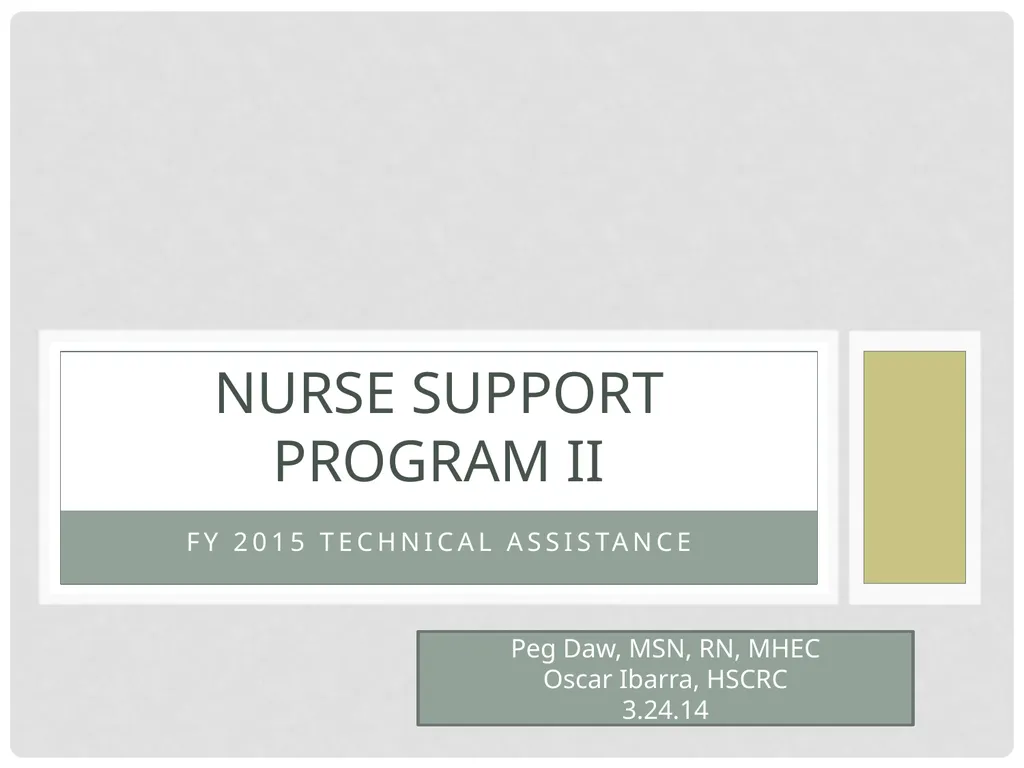
FY 2015 Technical Assistance Nurse Support Program
Author: min-jolicoeur | Published: 2025-05-29
Description: FY 2015 Technical Assistance Nurse Support Program II Peg Daw, MSN, RN, MHEC Oscar Ibarra, HSCRC 3.24.14 Request for APplications NSP II Competitive Grant FY 2015 RFA URL http:www.mhec.state.md.usGrantsNSPIINSPII.asp Proposals Due :
Download Presentation
Download the PPT/PDF: Download
Transcript:
Loading transcript…